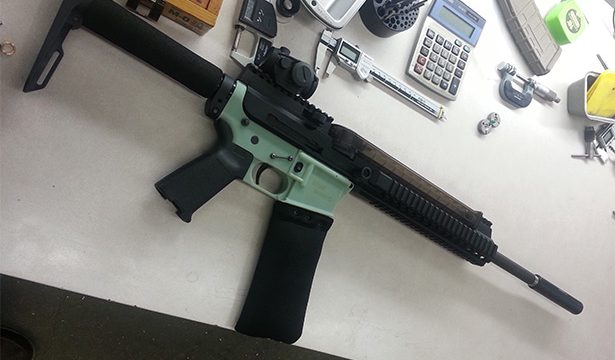What's The Future Of Gun Control In A Society That Can Print Out Firearms?

Home manufacturing, made possible by 3D printers, may be the proverbial “wave of the future.” And it may well make gun control policy obsolete:
Cody Wilson, like many Texan gunsmiths, is fast-talkin’ and fast-shootin’—but unlike his predecessors in the Lone Star State, he’s got 3D printing technology to help him with his craft.
Wilson’s nonprofit organization, Defense Distributed, released a video this week showing a gun firing off over 600 rounds—illustrating what is likely to be the first wave of semi-automatic and automatic weapons produced by the additive manufacturing process.
Last year, his group famously demonstrated that it could use a 3D-printed “lower” for an AR-15 semi-automatic rifle—but the gun failed after six rounds. Now, after some re-tooling, Defense Distributed has shown that it has fixed the design flaws and a gun using its lower can seemingly fire for quite a while. (The AR-15 is the civilian version of the military M16 rifle.)
The lower, or “lower receiver” part of a firearm, is the crucial part that contains all of the gun’s operating parts, including the trigger group and the magazine port. (Under American law, the lower is what’s defined as the firearm itself.)
Federal gun control policies are predicated upon the rather expansive interpretation of the Constitution’s interstate commerce clause. Which is to say that because firearms are sold across state lines, the federal government claims the right to regulate them. But what about guns that are manufactured at home? Those, by definition, would not be interstate commerce so how could the federal government regulate them?
States such as Montana and Wyoming already have laws exempting firearms manufactured and sold within their state borders from federal gun control laws. They don’t have much impact because not a lot of guns are manufactured in those states, but 3D printers could change that.
Of course, if 3D printers catch on you can bet the federal government will try to regulate them in a big way. And the courts could always find a way to stretch the interstate commerce clause a little bit further. Maybe they’ll find that the downloaded schematics used by the 3D printers cross state lines, and so open up the printed out product to regulation.
But it’s nice to see technology challenging policy.
Here’s video of the firearm being tested:







